By Pascal Wattellier, Serimax and Christian Fritz, National Instruments
Embedded control and monitoring from National Instruments keeps an automated multi-axis pipe welding system on the right path.
Automated welding systems are used around the world to weld oil and gas pipelines in the field. The “field” in each case can be anything from the frozen tundra of Siberia to the arid deserts of Dubai. So designing a monitoring and control system for these welders has to accommodate this vast range of environmental conditions.
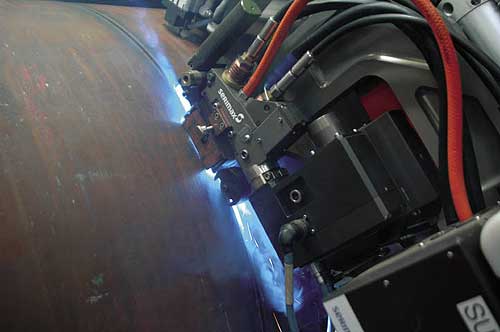
The Serimax SX09 head welding together two ends of a pipe.
The oil and gas industry has a zero-defect tolerance within the welding seam. Companies do the welding in harsh environments and can reach production rates that allow them to create 100 km pipelines in a very short time.
The challenge was to develop a rugged, cutting-edge, automated pipeline welding system that adapts to address various application requirements, provides maximum uptime, meets the highest reliability and quality standards, offers worldwide support, and has flexible hardware and software that can address control and monitoring needs throughout existing machine types in the future.
National Instruments’ LabVIEW software was used for all motion control, condition monitoring, and logic tasks with National Instruments’ CompactRIO hardware serving as a deployment target.
Pipeline Welding System Requirements and Concerns
The welding system needed to perform optimally in a range of conditions. The finished system, known as the Serimax SX09, can handle multiple welding processes ranging from traditional dual gas metal arc welding (GMAW) to dual-pulse GMAW to cold metal transfer (CMT). CMT allows operators to weld at lower temperatures and therefore have a lower thermal impact on the raw material, which results in higher welding quality.
One of the key features of the SX09 automated welding system is its flexibility in regards to the welding shape and position. It can weld any type of edge (V, J, and K) and bond two components in any of the common welding positions (1G, 2G, 5G, and 6G). The SX09 also minimizes the required cut back on the pipe, which reduces the pipe protection material needed on the production site and during transport.
The SX09 is a bug-and-band system that combines a rail (band) that goes around the pipe and a compact trolley (bug) incorporating the welding torches and all the mechanics and motors needed for automated operation. The system works by putting two pipes together with a clamp from the inside. The rail is placed around one of the pipes and then the welding head is aligned atop the seam. The welding process starts and the trolley crawls around the pipe welding it together.
The lightweight design is important for high throughput because the trolley readjusts an average of 100 times per welding job. All the components – motors, sensors, and welding torch – are easily accessible for quick and simple onsite maintenance. And the embedded control system incorporates diagnostic and condition monitoring functions.
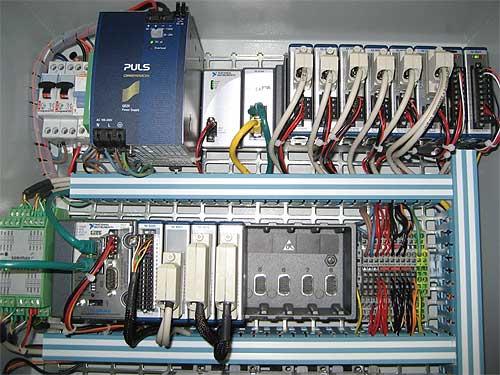
The control system consists of I/O modules and motion drives in an NI CompactRIO system and an EtherCAT expansion chassis.
Another key focus of the design is the health and safety of the welding machine operator. The ergonomic design is lightweight and can easily be operated with two hands. Features such as automatic torch alignment and wire feeding take the burden off the operator. A fume and smoke aspiration system protects the staff and enables the SX09 to comply with the latest guidelines of the Health and Safety Executive (HSE), which identified manual handling and fume extraction as the top two sources of welding accidents worldwide.
The old control system communicated with the network of motion drives using CANOpen and controlled five axes. The new system needed to control seven motors to move the welding head around the pipe along with moving the welding torch to guarantee a steady welding seam. Two motors are used to move the buck around the pipe, while two other motors align vertically on top of the welding seam. Other motors tilt the welding head back and forth.
The motor control system also had to tightly synchronize the movements of the multiple axes of motion as well as support industrial communication protocols and interface to a factory floor control system with an attached human-machine interface (HMI) and a custom handheld operator panel.
CompactRIO integrated motion control, I/O measurements, and HMI functions within one system. LabVIEW was used to implement all the different parts of the application and develop a modular application architecture that is easy to support.
Deployment With CompactRIO and LabVIEW
The control and monitoring applications are distributed across two different CompactRIO systems using deterministic EtherCAT communication. The majority of the I/O channels required for monitoring and logic are embedded in a high-performance CompactRIO system consisting of an NI 9022 controller and an NI 9114 modular backplane. An NI 9144 CompactRIO EtherCAT expansion chassis hosts seven NI C Series drive modules that are directly connected to five brushed and two brushless dc servo motors. A digital input C Series module in the same chassis provides all the required channels for limit switches and other motion-related I/O.
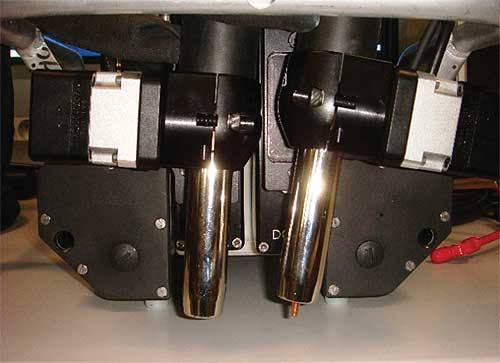
This close up shows the welding heads on the Serimax SX09 welder. Each is controlled by a brushless servo motor driven by an NI 9502 C series drive module.
The motion control programming was done in National Instruments’ Soft Motion. Soft Motion creates the motion profile, sets limits, and handles the supervisory aspects as well as synchronizing the motion.
The LabVIEW FPGA Module and the IP blocks of the LabVIEW NI SoftMotion Module were used to implement all the custom motion algorithms on the NI 9144 to create a seven-axis drive that exactly meets the specific requirements and connects to the real-time controller through deterministic EtherCAT communication. Digital I/O lines connect a rugged handheld operator panel to the CompactRIO system to allow the operator to initiate machine tasks.
An HMI implemented on an NI TPC-2212 touch panel computer indicates machine status information and allows additional machine setup and interaction. LabVIEW Web services provides an additional service interface for engineers to maintain the machine even from remote locations. Using LabVIEW as a development tool for all the components of the monitoring and control system gives designers access to the National Instruments network of systems integrators.
National Instruments
www.ni.com
Serimax
www.serimax.com
::Design World::
Filed Under: CONNECTIVITY • fieldbuses • networks, Machine tools + subtractive manufacturing, Motion control • motor controls

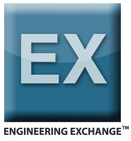



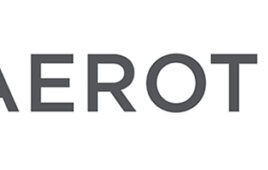
Tell Us What You Think!